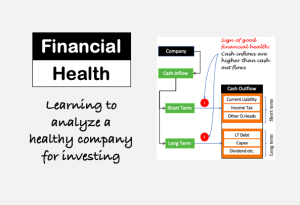
In today’s competitive tech industry, businesses are constantly striving to maximize efficiency and reduce operational costs. However, often the fear of sacrificing quality prevents them from making necessary cost-cutting measures. The good news is that it is possible to implement strategies that not only save money but also maintain the high standards expected by customers. In this article, we will explore various cost-cutting measures that can be taken without compromising on quality.
1. Streamline Operations
One effective way to reduce costs without sacrificing quality is by streamlining operations. This involves analyzing each process to identify areas of inefficiency or duplication and finding ways to simplify or eliminate them. By optimizing workflows and reducing unnecessary steps, companies can significantly cut down operational costs while improving productivity and enhancing quality control.
2. Embrace Automation
Automation is a game-changer when it comes to cost reduction without compromising quality. By automating repetitive tasks, businesses not only save time and free up valuable human resources but also minimize the risk of errors. Through the use of advanced technologies such as robotic process automation (RPA), artificial intelligence (AI), and machine learning (ML), businesses can achieve cost-savings and maintain high-quality standards.
3. Outsourcing and Offshoring
Outsourcing and offshoring have long been popular strategies for cost-cutting without sacrificing quality. By partnering with external service providers, businesses can take advantage of specialized expertise, reduce overhead costs, and focus on their core competencies. Offshoring allows access to skilled professionals in lower-cost regions without compromising on quality. However, when considering outsourcing or offshoring, it is crucial to thoroughly research and choose reliable partners to ensure quality remains a top priority.
4. Optimize Supply Chain Management
Efficient supply chain management plays a crucial role in cost reduction without compromising quality. By implementing advanced inventory management systems, companies can streamline procurement, reduce stockouts, and minimize waste. Negotiating favorable pricing with suppliers, optimizing transportation routes, and improving order fulfillment processes are all effective cost-cutting measures. When the supply chain operates seamlessly, businesses can ensure timely delivery of high-quality products while keeping costs in check.
5. Focus on Energy Efficiency
Energy costs can be a significant expenditure for tech companies, especially those operating data centers or utilizing large-scale manufacturing processes. Implementing energy-efficient technologies and practices not only reduces costs but also aligns with environmental sustainability goals. Upgrading to energy-efficient equipment, optimizing cooling systems, and utilizing renewable energy sources can yield substantial cost savings while maintaining the quality of operations.
6. Implement Lean Manufacturing
For companies involved in hardware manufacturing, implementing lean manufacturing principles can lead to significant cost savings. Lean manufacturing emphasizes eliminating waste, improving efficiency, and creating a culture of continuous improvement. By minimizing inventory storage, optimizing production flows, and reducing rework, companies can achieve cost reductions without sacrificing the quality of their products.
7. Invest in Employee Training and Development
While cost-cutting typically revolves around operational strategies, investing in employee training and development can have a positive impact on both cost reduction and quality maintenance. By equipping employees with the necessary skills and knowledge, companies can enhance productivity, reduce errors, and improve overall performance. A well-trained workforce ensures that quality remains a priority, reducing costly rework and customer dissatisfaction.
In conclusion, cost-cutting measures in the tech industry need not result in a compromise on quality. By streamlining operations, embracing automation, outsourcing or offshoring, optimizing supply chain management, focusing on energy efficiency, implementing lean manufacturing, and investing in employee development, businesses can successfully reduce costs while maintaining high-quality standards. It is crucial for companies to assess their specific needs and implement a combination of these strategies to achieve the desired balance between cost savings and quality assurance.

